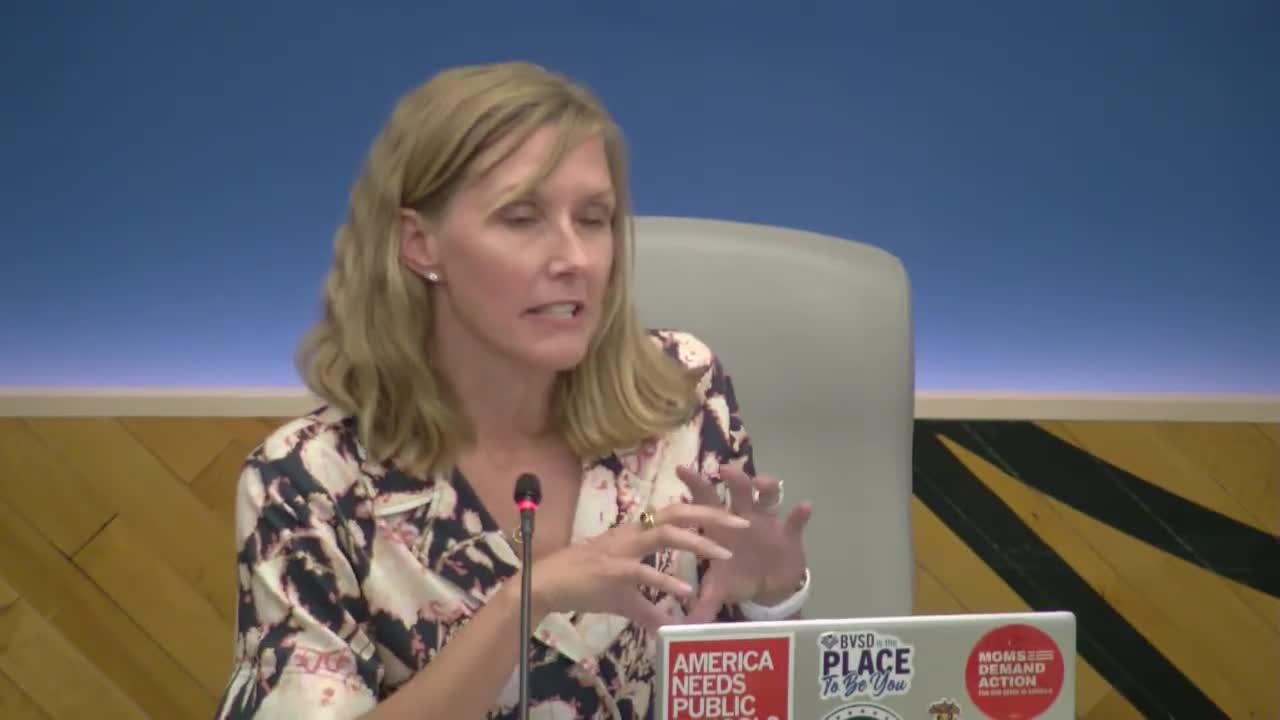Boulder School Board Debates Attendance Boundaries to Address Resident Population Needs
September 10, 2025 | Boulder Valley School District No. Re2, School Districts , Colorado
This article was created by AI summarizing key points discussed. AI makes mistakes, so for full details and context, please refer to the video of the full meeting. Please report any errors so we can fix them. Report an error »

Attendance boundaries took center stage at the Boulder Valley School District's regular meeting on September 9, 2025, as board members discussed the complexities of adjusting these zones amid declining enrollment and community concerns. The primary focus was on ensuring that neighborhood schools can accommodate all students who wish to attend, while also addressing the operational efficiencies of the district.
Board member Nicole emphasized that attendance boundaries are not designed to manage school choice, which has been a part of Colorado law for three decades. Instead, they aim to reflect resident populations and ensure that local schools have the capacity to serve their communities. "We need to have the physical space in our schools to ensure that everybody that wants to go to their neighborhood school is guaranteed a seat," she stated.
The discussion highlighted the impact of boundary changes on Crestview Elementary, where concerns were raised about the potential loss of students from a specific area. Jason pointed out that only about 50% of students zoned for Crestview currently attend, indicating room for growth. Despite the changes, Crestview is expected to remain the largest elementary school in Boulder.
Two options for boundary adjustments were presented. The first allows current fourth and seventh graders and their siblings to remain at their schools, while the second offers families the choice to stay or switch schools, with the understanding that future enrollment would follow the open enrollment process. This flexibility aims to accommodate families' needs while maintaining stability in school populations.
The board acknowledged the challenges of redefining boundaries, especially given that the last review occurred 40 years ago. Doctor Anderson noted that balancing enrollment with community needs is a complex task, as many factors, including demographic shifts and declining birth rates, influence school populations.
As the district prepares for these changes, board members reiterated the importance of clear communication with families about their options and the implications of boundary adjustments. The meeting underscored the ongoing effort to create a fair and efficient school system that meets the needs of all students while navigating the intricacies of school choice and community expectations.
Board member Nicole emphasized that attendance boundaries are not designed to manage school choice, which has been a part of Colorado law for three decades. Instead, they aim to reflect resident populations and ensure that local schools have the capacity to serve their communities. "We need to have the physical space in our schools to ensure that everybody that wants to go to their neighborhood school is guaranteed a seat," she stated.
The discussion highlighted the impact of boundary changes on Crestview Elementary, where concerns were raised about the potential loss of students from a specific area. Jason pointed out that only about 50% of students zoned for Crestview currently attend, indicating room for growth. Despite the changes, Crestview is expected to remain the largest elementary school in Boulder.
Two options for boundary adjustments were presented. The first allows current fourth and seventh graders and their siblings to remain at their schools, while the second offers families the choice to stay or switch schools, with the understanding that future enrollment would follow the open enrollment process. This flexibility aims to accommodate families' needs while maintaining stability in school populations.
The board acknowledged the challenges of redefining boundaries, especially given that the last review occurred 40 years ago. Doctor Anderson noted that balancing enrollment with community needs is a complex task, as many factors, including demographic shifts and declining birth rates, influence school populations.
As the district prepares for these changes, board members reiterated the importance of clear communication with families about their options and the implications of boundary adjustments. The meeting underscored the ongoing effort to create a fair and efficient school system that meets the needs of all students while navigating the intricacies of school choice and community expectations.
View full meeting
This article is based on a recent meeting—watch the full video and explore the complete transcript for deeper insights into the discussion.
View full meeting
